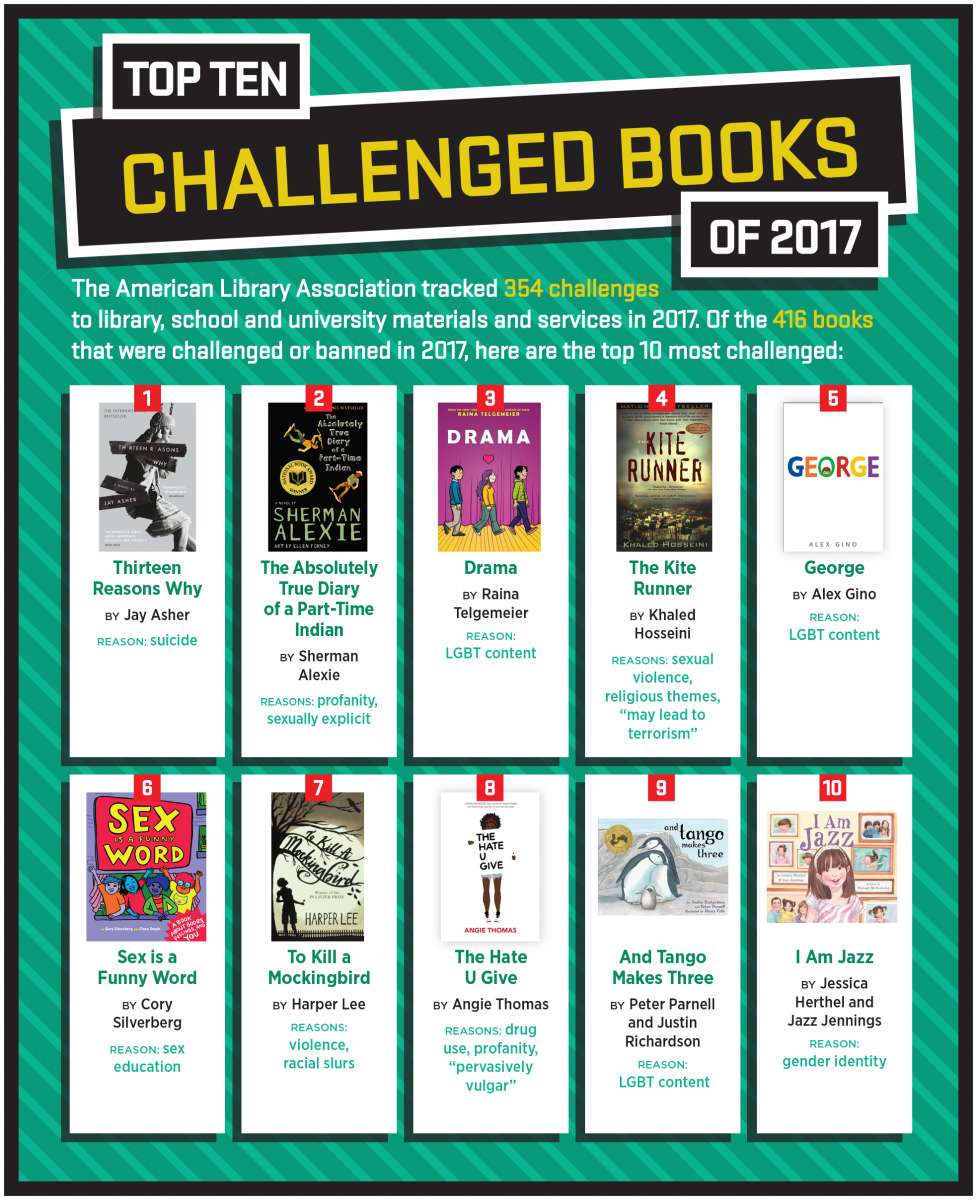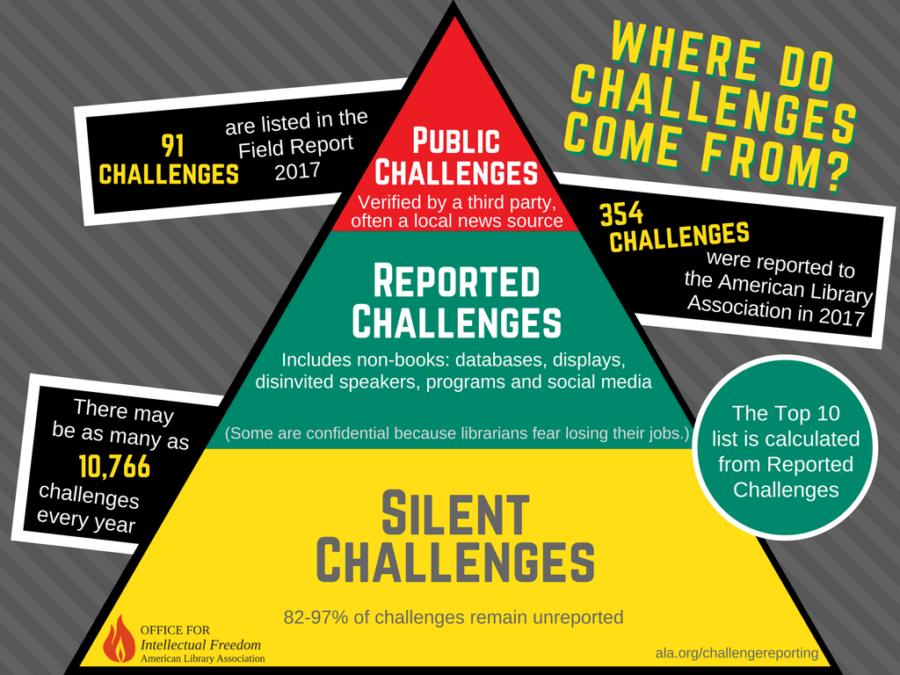Banned Books Week celebrated
Banned Books week is Sept. 23 to Sept. 29.
September 27, 2018
A required novel for freshman English at this school might never reach other students’ hands.
“To Kill a Mockingbird” ranks No. 7 on the Top 10 Most Challenged Books of 2017, according to the American Library Association. ALA sponsors Banned Books week this week.
“Who determines what’s right?” librarian Amanda Trussell said. “It’s not my job to tell you what you can and cannot read.”
Launched in 1982, Banned Books Week takes place the last week of September and celebrates students’ right to read what they so choose. Banned Books Week started when a large number of books were challenged in a short amount of time.

“By focusing on efforts across the country to remove or restrict access, Banned Books Week draws national attention to the harms of censorship,” the ALA writes on its website. “Banned Books Week brings together the entire book community – librarians, booksellers, publishers, journalists, teachers, and readers of all types.”
Banning books dates back to 210 BCE and has become a more common practice overtime. Everything from required novels to children’s books have been challenged and banned from school systems. Most of these books have to do with issues such as race and sexuality, such as “George,” a children’s book banned because of its discussion of middle schoolers struggling with their sexuality.
“To Kill a Mockingbird is not at all inappropriate,” Trussell said “I would let my sixth grader read it without a problem.”
While teaching ninth grade English, Trussell had to read the novel with her students multiple times, and never found an issue with it.
“Books are banned from fear,” Trussell said. “People are afraid of what they haven’t talked about…. Banned books are about access, and not content.”


